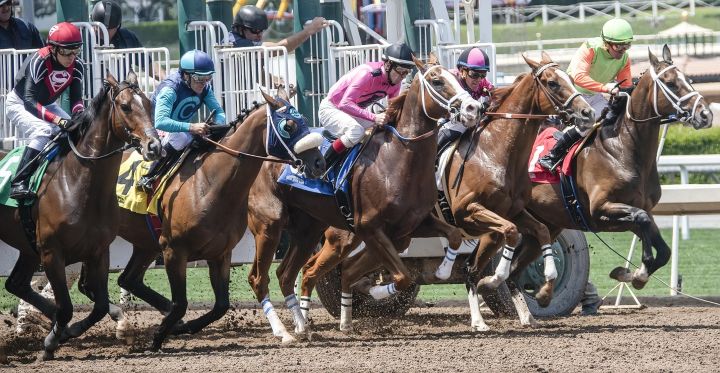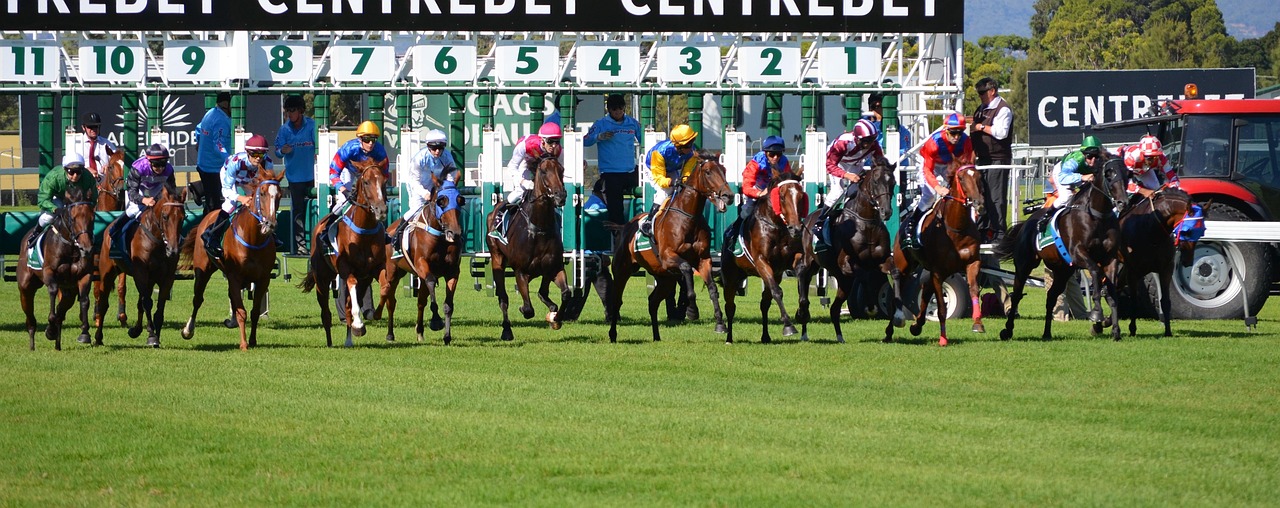Some people believe that a horse starting on the inside has the biggest advantage because it’s the shortest path around the track. Others prefer horses on the outside because they think the horse has more room to move. But, does post position really matter in horse racing?
What is a starting position in horse racing?
Before a race, each horse will line up at the starting gate. Each stall has a number, indicating where the horse will begin the race. This number is called the post position. A horse in post position 1 will start on the inside near the rail. Higher-numbered post positions will be further from the inside rail.
Program Number vs Post Position
It’s important to note that a horse’s program number is not always the same as their post position at the start of a race. A horse’s program number will be the number within the data file, and the number that the horse wears on their saddlecloth. The starting position, or post position, is where the horse actually begins the race at the starting gate. If a horse gets scratched from a race, the program numbers will stay the same, but the post positions may shift. Understanding this aspect can help prevent any confusion while analyzing horse racing data files.
How can starting position influence a race?

The starting position, or post position, can shape the early moments of a race and the path of the horse. This position will determine where the horse breaks from the gate, which has an influence on its initial path, early speed, and how easy it will be to find a comfortable running spot. The significance of its impact can vary depending on the track layout and distance. It’s also important to keep in mind that a horse is not fixed to this position. Once the gates open, jockeys will make quick decisions, and horses will shift positions as they progress through the race.
Horses on the inside post positions tend to have a shorter path around the first turn, which gives them an early advantage in a race. However, that spot can come with more risk as well. A horse that runs near the rail can get trapped and boxed in if other horses crowd too closely. This can make it hard for a horse to find an open space to run or gain ground.
Middle post positions are sometimes thought of as striking a good balance. Horses are allowed to find a good spot without carrying as much early risk. A horse that runs in a middle position doesn’t have the risk of being trapped as much against the inner rail. Additionally, this allows a jockey greater flexibility to adjust their in-game strategy based on how the race is going.
Outside posts can be a more challenging starting position for a horse, especially during shorter races where there is less time to make up ground. Horses breaking from the outside may have to use more effort early on to secure a good position before the first turn. Runs on the outside will have the longest route around the turns, which causes the horse to have to work harder to keep up. Even so, this spot can work well for horses that prefer to stay wide or make strong late moves.
What factors matter more?
Some people believe that certain starting positions are unlucky or automatically give a horse a huge advantage. The fact of the matter is, there isn’t a set rule that applies all of the time. Many other factors often play an even more important role than a horse’s post position alone.
The track condition, surface, and distance can also have a big impact on a race. If the weather is rainy and the surface is wet or muddy, it can completely change how a race unfolds for a horse. Additionally, some horses with early speed will run better in sprints, while others excel at longer routes that take stamina. So, the starting position of a horse is an important detail, but it’s a piece of a larger puzzle.


